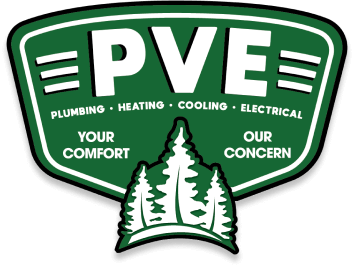With an annual average snowfall of 40 inches and nighttime temperatures that dip below freezing, Belchertown, MA is no place to be without a functional heater. Among the best ways to avoid winter heating emergencies is by timing your furnace replacement correctly. The following are seven signs that indicate the need for furnace replacement.
1. Advanced Age
On average, residential furnaces last between 15 and 20 years. If you’ve had the same furnace for more than two decades, now is the time to replace it. Not only does advanced age place furnaces at risk for mid-season failure, but it also impacts furnace performance. A new furnace will provide even and reliable heating and increased efficiency.
Loss of Warranty Protections
All new furnaces come with comprehensive manufacturer warranties. These warranties cover the cost of replacing or repairing defective components, poorly assembled components, and other issues resulting from manufacturer errors.
Although warranty duration varies from manufacturer to manufacturer, these agreements typically cover basic furnace parts for five to 10 years and heat exchangers for 20 years or longer. When furnace manufacturers’ warranties expire, homeowners must cover all repair costs out of their own pockets. If you schedule furnace replacement now, you’ll get all-new warranty protections and lasting peace of mind.
Get Access to New and More Efficient Heating Technologies
Another important benefit of replacing a 20-year-old furnace is gaining access to the latest home heating technologies. Modern furnaces have higher annual fuel utilization efficiency (AFUE) ratings. They convert more fuel into usable heat energy as a result. Many of the latest furnace models also have smart or AI-integrated controls for greater convenience and ease of use..
With an updated furnace, you can seamlessly integrate your heating system into your smart home control system, and enjoy enhanced functions like:
- Zoning capabilities
- Advanced data analytics
- Programmable heating schedules
- Remote monitoring and control
The longer that you wait to replace your old, outdated furnace, the more you’ll miss out on.
2. Your Furnace Has a Standing Pilot Light
There are several options in furnace ignition systems. Older gas furnaces have standing pilot lights, and newer models have either intermittent pilot lights or electronic ignition switches. Standing pilot lights draw and consume gas nonstop. Intermittent pilot lights only use fuel during active heating cycles. Electronic ignition switches ignite furnace burners with a single spark. Of the three, electronic ignition switches use far less energy overall.
Standing pilot lights are inherently inefficient. If you have an older furnace with a standing pilot light, your furnace is using energy even when you’re away. Standing pilot lights also pose safety hazards by increasing the risk of natural gas leaks.
Upgrading to a new furnace with an electronic ignition switch will eliminate this risk and conserve energy. With a new furnace, you can also sidestep the hassle of relighting your pilot every time there’s a nearby draft.
3. Poor Indoor Air Quality
If you or other people in your household regularly sneeze, cough, or experience other indoor air quality (IAQ) symptoms when your heater is on, the advanced age of your furnace could be to blame. Even with annual tune-ups and regular air filter changes, furnaces collect and harbor lots of particulate matter throughout the years. Trapped pollen, dander, dust, and other debris can break free during heating cycles. Your furnace could circulate these allergens throughout your home.
The advanced age of your furnace can affect your IAQ in far more serious ways. Aging furnaces are more likely to develop problems like cracked heat exchangers or damaged exhaust vents that allow carbon monoxide (CO) into the building.
4. Excessive Repair Costs
Although furnaces can last 20 years or longer, not all of their parts will. Your furnace will need the most repairs during the last two to three years of its lifespan. If you need furnace repair service multiple times each year, you’ll save money by replacing your furnace instead. Putting a new furnace in often proves far cheaper than replacing existing heating equipment piece by piece.
Major issues like cracked heat exchangers, faulty blower motors, and damaged draft inducer motors can prove extremely costly. This is especially true when aging furnaces no longer have warranty protection. As a general rule, homeowners should swap their furnaces out whenever their cumulative repair costs reach or exceed half the cost of furnace replacement.
5. Rising Energy Bills
Furnaces can experience tremendous losses in efficiency after just 10 years of service. According to the U.S. Department of Energy (DOE), a 20-year-old furnace could have an AFUE as low as 50%. At this rate, your furnace will only convert half of the fuel that it consumes into usable heat energy. It will lose all the rest as exhaust gases.
Not only are age-related efficiency losses bad for the environment, but they can also wreak havoc on your winter heating bill. A 20-year-old furnace will use more fuel to produce less heat. It will also run longer heating cycles and more of them. You’ll pay far less to heat your home when you install new heating equipment. This upgrade will also significantly lower your carbon footprint.
Your new furnace could have multiple modern efficiency upgrades, such as:
- A variable-speed blower motor
- A secondary condensing heat exchanger
- A refined and tightly sealed combustion chamber
- An updated ignition system
- Smart thermostat integration
6. Uneven or Inconsistent Heating
A good sign that your furnace is on its way out is uneven or inconsistent heating. A standard, central heating system should create and maintain a uniform temperature throughout the building. If you have noticeable hot and cold spots throughout your home, your aging furnace might struggle to both produce and distribute sufficient hot air. Installing a new furnace will ensure that every resident can enjoy a warm, cozy room.
7. Sizing Issues
Sometimes the need for furnace replacement isn’t about aging, loss of efficiency, or accumulated wear. If you recently remodeled your home, added a new room, knocked down walls, or made other structural changes, your current furnace might not be the right size for its new service area.
Furnaces that are too small for their service areas run nonstop and often fail to create the conditions that residents want. Oversized furnaces run short and ineffective heating cycles by powering on and then rapidly turning back off. Whether too large or too small, incorrectly sized furnaces drive home energy bills up. They also experience more problems than correctly sized furnaces and have shorter than average lifespans.
During furnace replacement, our technicians will use the Manual J Load calculation to find the right heater size for the building based on your revised living area, current ceiling heights, window sizes and types, and other factors.
We’ve proudly served Belchertown and the surrounding cities since 1999. We offer expert furnace replacement, maintenance, and repair services. If your furnace can no longer heat your home reliably and efficiently, give Pioneer Valley Environmental a call.









